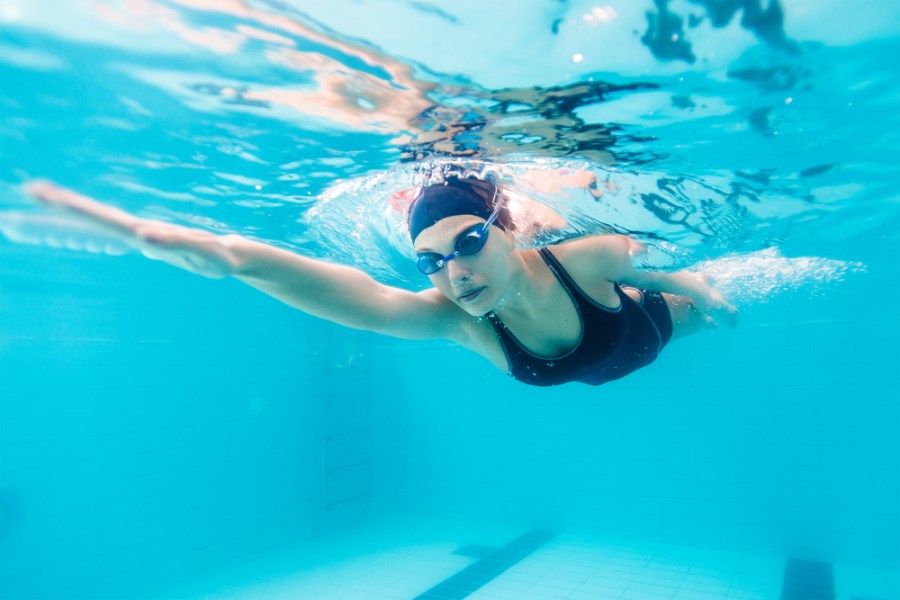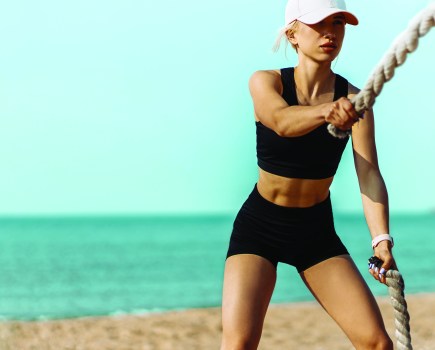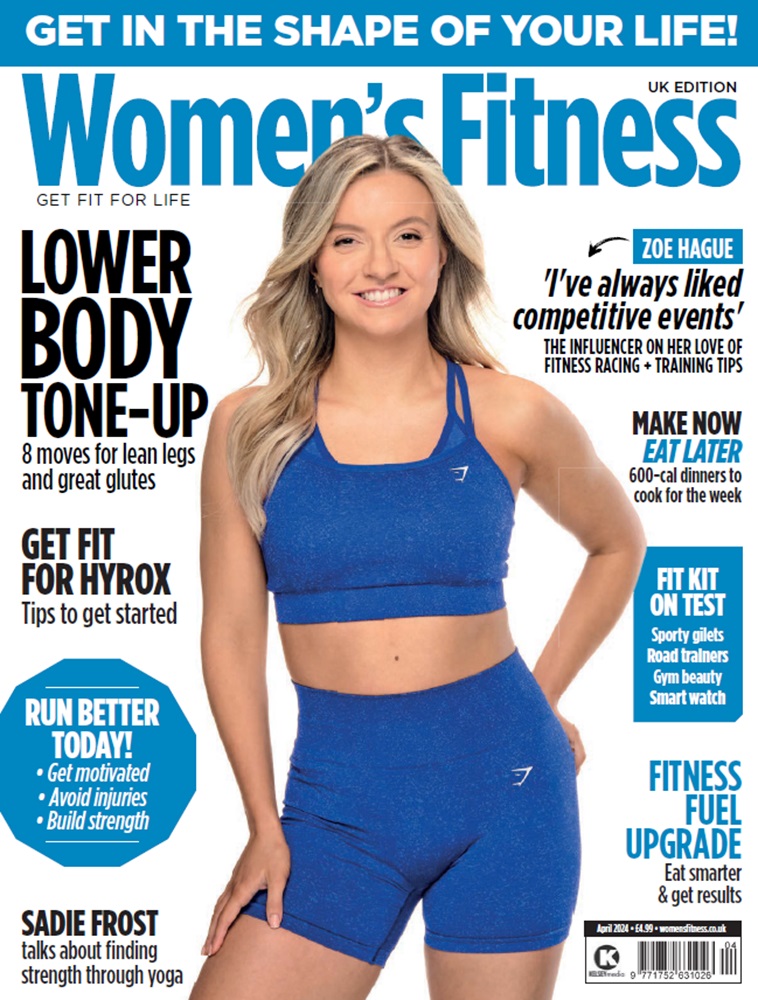Do you enjoy swimming but find it painful and uncomfortable? Lucy Fry looks at common aches and pains suffered by regular swimmers, and how to overcome them.
Swimming can cause pain and niggles in the lower back, knee and shoulder, particularly where technique is poor. Here are some of the main issues and how to overcome them.
Swimmer’s lower back
Lower back issues in swimming are more common in butterfly and breaststroke than front crawl. ‘The high arching position created in butterfly can cause issues and is usually the result of athletes not rotating properly in the water and arching up through the back when taking a breath,’ says Miles Busoni, a chiropractor at ActiveBacks. Mobilising the lower and thoracic spine when out of the pool is important here, as you can’t rotate more if you’re locked up in that area.
Back issues in breaststroke occur also because of an overextension of the lower back. Busoni suggests: ‘Keep the head positioned down in the water during breaststroke (this limits back extension) and also practise with a pull buoy in-between the legs to help keep the legs high in the water and reduce the arch in the back.’
Swimmer’s knee
Swimmers knee is the most common lower limb injury in swimming, especially in triathletes who spend long hours training (on the bike and when running) with knees bent and hips flexed. These areas can become chronically tight. Knee pain occurs most typically in swimmers who do breaststroke, due to that point in the stroke at which the leg lashes out to the side, the outstroke. ‘It’s an unusual angle for the hip and knee to maintain,’ says Busoni. ‘Make sure to warm up and stretch the hips and leg muscles before training sessions involving a lot of breaststroke and consider including at least more than one stroke during each session to avoid overuse injuries.’
Swimmer’s shoulder
Shoulder pain from front crawl and butterfly is by far the most common problem for swimmers. Swimmer’s shoulder is the umbrella term often given to shoulder pain associated with over-training and the repetitive nature of swimming. The root cause of the pain is far more complex however, and shoulder pain can also be confusing as shoulder pain(s) can refer to other areas of the body, including the neck, thoracic spine and even down the arm.
‘The shoulder is a very shallow ball-and-socket joint (the glenohumeral joint) that’s made more stable by, among other things, the muscles of the shoulder, including the rotator cuff,’ says Busoni. ‘Training your rotator cuff with specific strengthening exercises can be extremely beneficial in reducing potential shoulder injury.’
Why is the shoulder at risk with swimming front crawl?
Busoni says: ‘Unlike any other joint in the body, the shoulder joint’s range is vast and unfortunately all of this joint range of motion comes at price – stability is compromised and therefore the importance of having a shoulder that’s both strong and mobile is important if you’re to avoid injury.’
One of the main causes for shoulder pain or problems is shoulder impingement, often caused by overuse of the shoulder which makes tendons swell and end up catching when you take a stroke. ‘Poor technique or tight and overactive internal rotator cuff muscles will need to be addressed and monitored, regardless of your experience or ability in the pool,’ says Busoni.
What if it hurts?
If you’re pain in any of these areas after swimming (or in general after training), it’s likely that you’re inflamed. Inflamed muscle tissues or joints are often due either to imbalances in the muscles themselves or poor joint control. It’s time to take care of yourself, work on mobility and also train the muscles to be stronger! Sitting in the same position for long periods of time or doing the same repeated movements a lot can all cause certain areas to tighten excessively whilst also becoming weak – a bad combination.
‘These parts can become chronically irritated and sensitised,’ explains Busoni, ‘leading to a build-up of scar tissue which results in tight weak muscles that need to be treated by a professional.’ If in doubt, seek advice from a chiropractor, osteopath or physiotherapist to address and remove residual scar tissue and promote healing. Look for specialists in Active Release Techniques (ART) and Graston technique, two extremely effective treatments to help release sticky muscle tissues.
Five ways to reduce pain and injury risk
Warm up into your training sessions and allow your body to adjust to the demands you’re going to be placing on it in the sessions ahead!
Increase training load slowly. Injuries are often seen when athletes go through rapid increases in training loads, leading to poor shoulder control and fatigue. Don’t increase more than 10 per cent in distance or time each week giving your body the chance to adapt without overload.
Train technique over everything else. Poor technique causes all sorts of problems such as allowing the arm to cross the midline when doing front crawl (this usually happens because you aren’t rotating enough) and placing your hand in the water whilst over-rotating your shoulder. Getting a coach to assess all aspects of your stroke technique is key if you’re unsure.
Train the external rotation of your shoulder. Every time you take a stroke in front crawl, your shoulder joint turns inwards. It makes sense, then, that to counteract that one should work on external rotation of the same joint, yet so many people don’t do this.
Ice if sore and heat if tight. If you have niggles after a session in the pool or open water wait until they calm down before training again at the same intensity. Busoni recommends icing your shoulder three times a day for ten to 15 minutes. If there are muscles that don’t actively hurt but still feel tight and restricted, apply heat in a similar way (a hot water bottle or heat pad). A long bath helps relax the muscles after a session too.







